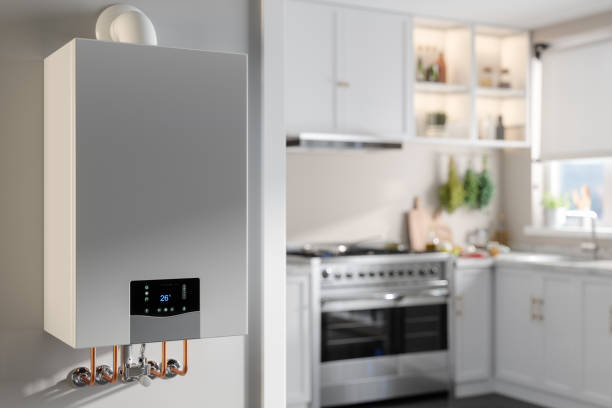When it comes to heating our homes, radiators play a crucial role in maintaining comfort during the colder months. However, in many homes, especially those with limited space, traditional radiators can be cumbersome and take up valuable room. Fortunately, there are innovative solutions available that allow you to heat your space effectively while also saving on precious square footage. In this article, we’ll explore how to choose radiators that save space without sacrificing warmth, including various radiator types with maximum space efficiency.
Understanding Your Heating Needs
Before diving into the specifics of radiator selection, it’s essential to understand your heating requirements. The size of the room, the insulation quality, and the number of windows can all influence how much heat you need. A well-insulated room will require less heating than one with drafty windows or poor insulation.
To determine the right radiator size, consider the following:
• Room Size: Measure the dimensions of the room to calculate the required BTU (British Thermal Units) output. There are online calculators available that can help you with this.
• Insulation Quality: If your home is well-insulated, you may need a smaller radiator. Conversely, older homes may require more powerful heating solutions.
• Usage: Think about how often you use the room. A seldom-used guest room may not need the same heating capacity as a frequently occupied living room.
Exploring Space-Saving Radiator Options
Once you have a clear understanding of your heating needs, you can explore various radiator options that are designed to save space. Here are some popular choices:
1. Compact Radiators
Compact radiators are designed to be smaller in size while still providing effective heating. They are ideal for smaller rooms or areas where wall space is limited. These radiators often feature a sleek design that can blend seamlessly with your decor. For instance, the Revive Compact Radiator is a great example of a compact radiator that maximises space without compromising on warmth. Explore radiator types for maximum space efficiency today.
2. Vertical Radiators
Vertical radiators are an excellent choice for narrow walls or tight spaces. They take advantage of vertical wall space, allowing you to free up floor area. These radiators come in various styles and finishes, making them a stylish addition to any room. They can also serve as a design feature, adding character to your space.
3. Towel Radiators
Towel radiators, often found in bathrooms, serve a dual purpose. They not only heat the room but also provide a convenient place to hang towels. These radiators come in various sizes and styles, making them versatile for different spaces. They can be mounted on walls, saving floor space while ensuring warmth.
4. Underfloor Heating
While not a radiator in the traditional sense, underfloor heating is an increasingly popular option for those looking to save space. This system heats the floor directly, eliminating the need for bulky radiators altogether. It can be particularly effective in open-plan living areas, providing even heat distribution without taking up wall space.
Choosing the Right Style and Finish
When selecting a radiator, aesthetics should not be overlooked. The right style and finish can enhance your home’s interior design. Here are some considerations:
• Material: Radiators are typically made from steel, aluminium, or cast iron. Steel radiators are lightweight and heat up quickly, while aluminium radiators are known for their efficiency. Cast iron radiators, while heavier, offer a classic look.
• Colour and Finish: Radiators come in various colours and finishes, from traditional white to bold hues. Consider how the radiator will fit into your overall decor. A well-chosen radiator can become a focal point in the room.
• Design: Modern radiators come in a range of designs, from minimalist to ornate. Choose a design that complements your home’s style, whether it’s contemporary, traditional, or eclectic.
Installation Considerations
Once you’ve chosen the right radiator, consider the installation process. Proper installation is crucial for optimal performance. Here are some tips:
• Professional Installation: While some homeowners may opt for DIY installation, hiring a professional can ensure that the radiator is installed correctly and safely.
• Location: The placement of the radiator can significantly impact its efficiency. Ideally, it should be positioned under windows or in areas where heat is needed most.
• Thermostatic Radiator Valves (TRVs): Installing TRVs allows you to control the temperature of individual radiators, providing greater flexibility and energy efficiency.
Maintenance for Longevity
To ensure your radiators continue to perform efficiently, regular maintenance is essential. Here are some maintenance tips:
• Bleeding: Over time, air can become trapped in radiators, reducing their efficiency. Bleeding the radiator can help release trapped air and improve heat output.
• Cleaning: Dust and debris can accumulate on radiators, affecting their performance. Regularly dusting and cleaning your radiators will help maintain their efficiency.
• Annual Checks: Consider scheduling an annual check-up with a heating professional to ensure your system is running optimally.
Conclusion
Choosing the right radiators for your home doesn’t have to mean sacrificing warmth for space. By understanding your heating needs and exploring various space-saving options, you can find a solution that fits both your practical requirements and aesthetic preferences. Whether you opt for compact radiators, vertical designs, or even underfloor heating, the key is to select a system that maximises efficiency while enhancing your living space. With the right approach, you can enjoy a warm, inviting home without the clutter of bulky radiators.



